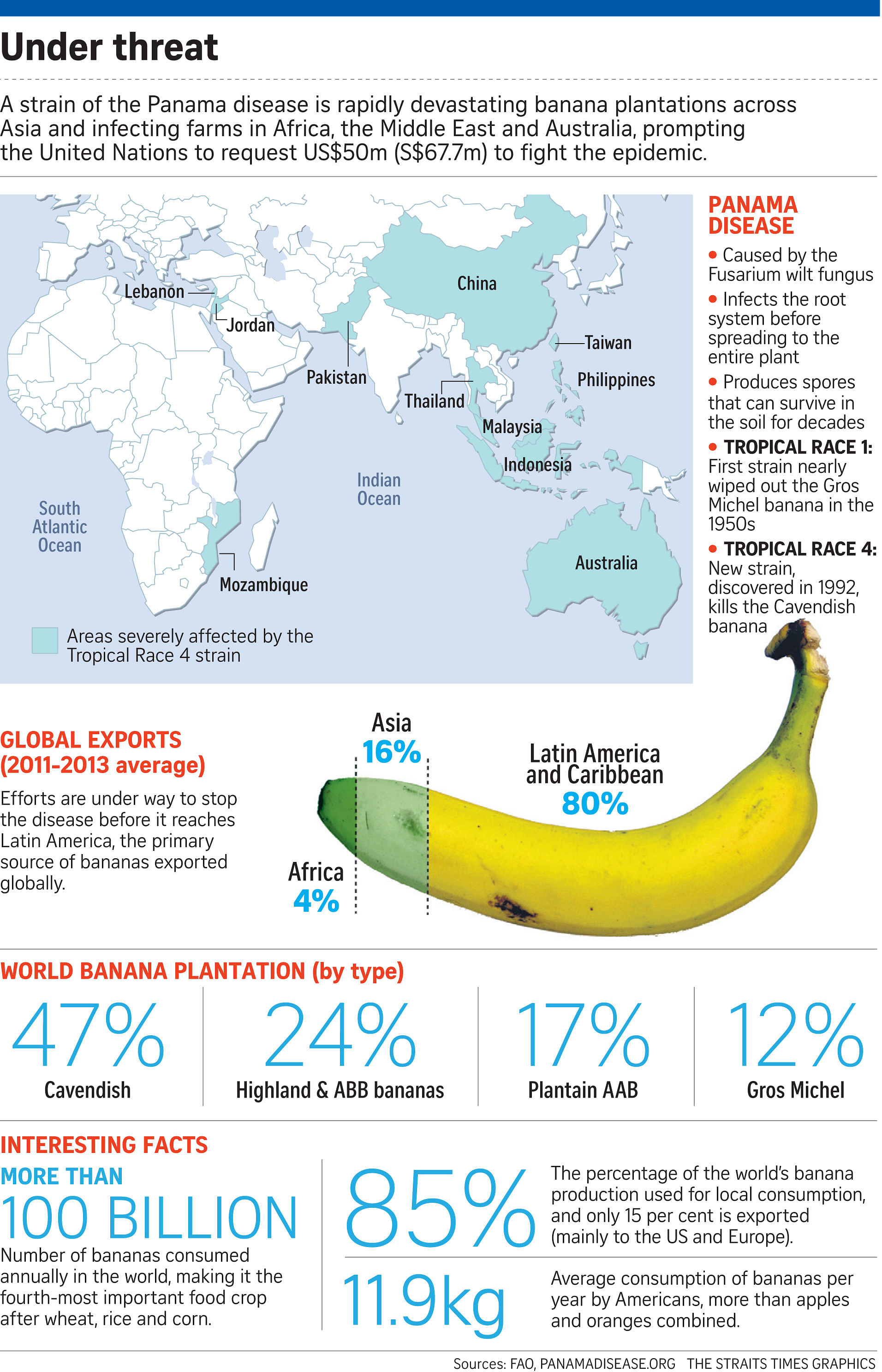Supplies of bananas in Singapore are stable even amid growing fears over a disease that is affecting the global crop.
The outbreak is caused by the Tropical Race 4 strain of the Panama disease, a soil fungus that has already spread across Asia - including the Philippines and Indonesia - to parts of Australia, Africa and the Middle East.
The United Nations warned earlier this month that the disease threatens the US$36 billion (S$48.8 billion) banana industry, adding that the sector must intervene "to tackle one of the world's most destructive banana diseases", CNN reported.
In Singapore, however, the Agri-Food and Veterinary Authority (AVA) told The Straits Times that the supply of bananas is stable.
"Singapore imports bananas from various countries, including the Philippines, Malaysia, Ecuador, Vietnam and India. The import quantity has increased over the years," said an AVA spokesman.
Last year, 54,000 tonnes of fresh and chilled bananas were imported into Singapore, up from 51,000 tonnes in 2014 and 48,000 tonnes in 2013.
The main banana type affected by the disease is the Cavendish banana, which makes up 47 per cent of bananas grown worldwide, according to the UN's Food and Agriculture Organisation.
Singapore supermarket chains Sheng Siong and FairPrice said their supplies and prices of Cavendish bananas have not been affected.
Even so, FairPrice said supplies and prices do fluctuate owing to demand and supply factors, as well as weather conditions such as the El Nino phenomenon, which can lead to a decline in harvests.
Cavendish bananas make up slightly more than half of the bananas sold by Sheng Siong. The chain said the supply of Cavendish bananas is "forecast to be stable, and prices should not be fluctuating too greatly in the short term".
Sheng Siong and FairPrice said they have diversified their sources for Cavendish bananas. For the longer term, Sheng Siong said it will continue to monitor the situation.
First discovered in Taiwan in the 1990s, the Tropical Race 4 strain rapidly ruined crops as it spread across South-east Asia. In the past three years, crops in the Middle East, Africa and the Australian state of Queensland have been infected by the strain, which is spread through soil, water and contaminated farm equipment.
In the 1950s, an earlier strain of the Panama disease, known as Tropical Race 1, nearly wiped out what was then the most popular banana variety, the Gros Michel. In response, producers shifted production to the Cavendish banana, which is resistant to the Tropical Race 1 strain but not Tropical Race 4.
Dr Tony Pattison, a Queensland government scientist, told the Financial Times that the fungus infects a banana plant through its roots, causing a wilting that spreads to the entire plant, destroying it. Once established, the fungus is hard to treat.
There are fears that the disease could now threaten crops in Latin America. The International Banana Congress, held last week, moved its venue at the last minute from Costa Rica to Miami owing to concerns that those attending could spread the disease through contaminated soil on their shoes, according to The Guardian.
The banana industry could face escalating prices and many smaller operators could lose their livelihoods should the disease spread to Latin America.
For now, scientists are placing their bets on a new banana variety known as the GCTCV-219, which was developed by the Taiwan Banana Research Institute, and is said to have a shape and taste similar to the Cavendish.


